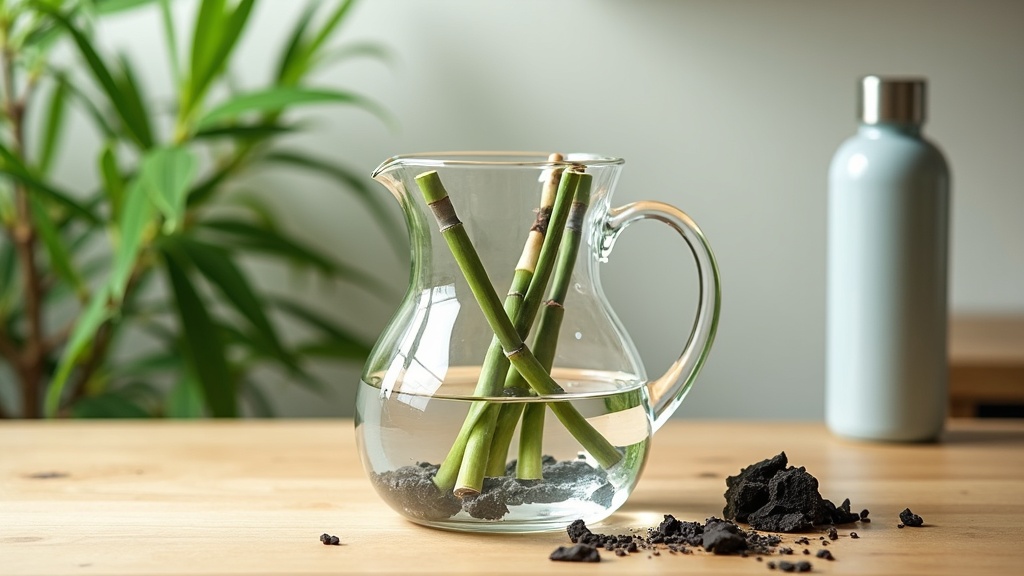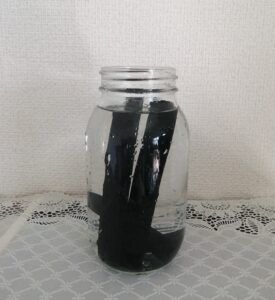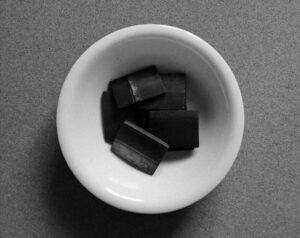
Bamboo charcoal water filters are turning up everywhere in ecofriendly circles these days. The idea is pretty straightforward; you just pop a stick or a chunk of charcoal into your water bottle or pitcher, and it naturally absorbs impurities, improves taste, and skips all the plastic waste from traditional filters. As someone who aims to keep life lowwaste and healthy, I’m always checking these out for home use, travel, and even the office.
There are two main options you’ll spot online and in stores: bamboo charcoal sticks and irregular pieces. Both make use of the natural filtering power of activated charcoal made from fastgrowing bamboo. But which one is a better fit for you? Here’s a close look at both styles, how well they work, and what to know before you buy.
Quick Overview: Bamboo Charcoal Water Filters
Activated charcoal has a long history as a filter for water and air because it’s so good at attracting and holding onto toxins, heavy metals, chlorine, and even some microbes. Bamboo charcoal is created by heating pieces of bamboo to very high temperatures, producing a porous structure with an extensive surface area. This quality helps it grab those unwanted things from your water and keeps them locked away as you sip.
Bamboo charcoal sticks are usually slim, uniform rods, about the length of a pencil. Charcoal pieces are more like chunky shards, with different sizes and shapes in the same package. You can drop one or more sticks or pieces into your water container and let them work their magic. This method is both simple and easy to stick with every day.
Who Should Try Bamboo Charcoal Filters?
- Anyone aiming to cut down on singleuse plastic from pitcher filters
- Apartment dwellers who want to make tap water taste better on a budget
- People with sensitive taste buds who notice the chlorine flavor in tap water
- Travelers hunting for a portable option to filter water with no fuss
- Folks interested in natural, zerowaste solutions for kitchen, office, or even camping trips
Pros and Cons: Sticks vs. Pieces
Sticks Pros:
- Fit easily in water bottles and pitchers
- Look tidy and simple, which is nice if you want to display them in a carafe or jar
- Easy to remove, clean, and reuse repeatedly
Sticks Cons:
- Slightly pricier per stick, yet they last just as long as the pieces do
- Don’t always fit in containers with narrow openings or unique shapes
Pieces Pros:
- You can break up large pieces to fit small bottles or oddly shaped containers
- Often come in bulk bags at a lower price per ounce
- Ideal if you want to filter more water at once and need the extra surface area
Pieces Cons:
- Loose shards can be messy when pouring from a pitcher
- Some pieces may be small enough to slip into your glass, which can be annoying
How Well Do These Filters Actually Work?
From my experience with both sticks and pieces, the results are pretty positive, though some details matter. Bamboo charcoal really steps up water taste, especially if your tap has a chemical or musty flavor. Most people notice their water tastes much smoother and more neutral after just a few hours of soaking a stick or several pieces in it.
Activated bamboo charcoal can pull out chlorine, heavy metals, and funky odors, but it won’t completely handle bacteria and viruses. For city tap water, that’s often not an issue. If you’re using water from a source that’s questionable, you’ll need a stronger filter. Ultimately, the more charcoal that’s in contact with your water, the better the filtration—it’s all about that expanded surface area.
It’s also worth noting that the process is pretty gentle. There are no strange tastes imparted to your water. In fact, people with sensitive palates often find water from bamboo charcoal filters much more pleasant.
How to Use Bamboo Charcoal: Sticks and Pieces

- Rinse charcoal sticks or pieces with plain water before your first use. This removes any leftover dust from processing.
- Drop one stick, or a handful of pieces depending on your container size, into your water bottle, pitcher, or carafe.
- Let the charcoal soak for at least one hour, and up to eight hours for the best taste results.
- To refresh charcoal, boil it in water for about 10 minutes every week or so. Most brands recommend reusing sticks or pieces for around two to three months.
- When you’re done with them, toss the spent charcoal into your compost bin or place it in houseplant soil for a handy mineral boost. Alternatively, bamboo charcoal used for water purification can potentially be reused for dehumidifying or deodorizing purposes by placing it in a breathable bag.
There’s not a lot of maintenance involved, which is one reason why so many people stick with this type of filter. The natural approach fits neatly into lowwaste living and doesn’t ask much of your time or effort.
Price and Value: What Should You Expect?

Bamboo charcoal isn’t always the cheapest at first, but because you can reuse each stick or piece for weeks, it’s pretty affordable in the long run. Packs of five to ten sticks usually run between $10 and $20. A bag of pieces tends to cost a bit less per ounce and is ideal if you go through a lot of filtered water. Plus, since you aren’t tossing any plastic or buying frequent refills, the overall cost can wind up being lower over time compared to subscription filter brands.
When pricing things out, shipping, brand reputation, and your location can all influence the final total. It’s a good idea to read a few reviews first and look for trusted ecofriendly brands. For most homes, one or two sticks per pitcher lasts for a couple of months, which keeps the recurring cost pretty low compared to traditional filter systems.
User Feedback and Reputation
- The taste improvement is a huge hit with most users—this is by far the most common compliment, and I’ve experienced it too
- Some people mention that it takes a couple of fills before hitting the “sweet spot” in flavor, but patience pays off
- If you want instant water filtration, bamboo charcoal might feel slow, since it needs a little time to work
- Occasionally, people mention charcoal dust winding up in the water. It’s harmless, but a quick rinse or filter cloth solves this easily
Bamboo charcoal pieces and stics are earning loyal fans among zero waste and natural living enthusiasts. Major brands like Binchotan get plenty of five star reviews on sites like Amazon, Etsy, and in online ecofriendly shops.Japanese bamboo charcoal is also available for buy on Amazon.
Choosing Between Sticks and Pieces
Your own bottle or pitcher is usually the deciding factor. If you use slim water bottles or want a tidy look for a dinner table or office, it’s easier to go with sticks. For home pitchers, wide jars or anyone needing more bang for the buck, a bag of irregular pieces is super practical. Some brands pack both styles together for extra flexibility, so consider whether variety is helpful for your routine.
If you’re not sure which to get, try starting with sticks for your daily bottle and pieces for the family pitcher. Both will improve taste, and you can mix things up as your needs change from season to season.
Final Thoughts on Bamboo Charcoal Water Filters
Bamboo charcoal sticks and pieces make a great alternative to traditional plastic and disposable water filters. You’ll notice a real improvement in water flavor and you can feel good about avoiding added plastic trash. If your main goal is better taste and less waste, you really can’t go wrong with either style. It mostly depends on your containers and what feels most convenient for you.
Have you tried bamboo charcoal yet? Plenty of solid options are out there, so it’s worth experimenting with both types until you stumble upon your favorite fit. Once you switch over, you may find it tough to go back—your water, and the planet, will thank you.
All-Natural Water Purifying Japanese Bamboo Charcoals for Great-Tasting Water
“Here’s a little transparency: Our website contains affiliate links. This means if you click and make a purchase, we may receive a small commission. Don’t worry, there’s no extra cost to you. It’s a simple way you can support our mission to bring you quality content.”
